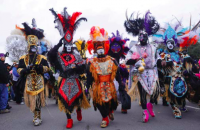decadence 2007.png

zulu 2015.png

Cheryl Gerber’s new book, “New Orleans: Life and Death in the Big Easy,” is a beautifully photographed, social commentary on modern New Orleans culture. While it amply demonstrates the obvious disparities between New Orleanians – black, white, rich, poor, male, female, gay, straight, or any combination thereof – it also succeeds in its assertion of just how much alike, deep down, we truly are. In general, New Orleanians love to dance and laugh and shout and strut, but our motivations for doing so are as varied as our circumstances. As Chris Rose points out in the book’s forward, “All interactions and activities here are marked by contrast, contradictions, or coincidence. Or all three.”
Gerber, a native New Orleanian, lays vivid images of these contrasts and contradictions side by side for comparison. For instance, an umbrella might be used for protection against the elements, as a symbol of celebration, or as an accessory to an already elaborate parade suit. A crown in a Chalmette beauty pageant is a bejeweled tiara, but among our Mardi Gras Indian tribes, it’s a beaded, feathered headdress. Most of us have been part of a funeral procession at some point in our New Orleans lives, whether we solemnly step behind a well-regarded white politician in a Cadillac hearse leaving St. Louis Cathedral, or high-step it behind a beloved black musician in an elegant, horse-drawn carriage winding its way through the Sixth Ward. Citywide, our rituals possess an almost instinctive sense of pomp and circumstance that reaches beyond lines of race, class, and gender. And Gerber reminds us, through her photographs, of why this is: because the culture taught us these things, and in turn we understand the importance of teaching them to others. In doing this, we know the culture will see us through to the very end, as depicted in the photograph of Hot 8 Brass Band drummer Dinneral Shavers playing a jazz funeral just one year before his own.
There are also overt contradictions in our “alikeness.” There’s an image of a no-nonsense National Guardsman patrolling post-Katrina streets next to a photo of a game-face wearing member of the Lady Buckjumpers Social Aid & Pleasure Club. Both are clad in camouflage suits, but instinctively we know these two are fighting on vastly different front lines, one public, the other, personal. Another social aid and pleasure club, the Black Men of Labor, flossing brilliantly-colored, matching finery, are juxtaposed against a group of white male shipyard workers, also clad alike down to matching hardhats, but in drab workmen’s garb. In another contrast, a party of buff, feathered, scantily-clad “macho men” celebrating Southern Decadence are presented alongside a krewe of plumed, black-faced Zulu warriors wearing their signature grass skirts, demonstrating that we have our own definitions of masculinity here. There are two photographs, both awash in dusky orange hues, of feminine silhouettes peering out of windows: One woman is dancing in the “come-on” window of a Bourbon Street strip club. The other gazes out onto a Central City murder scene.
Two resonating sets of photographs involve cousins Troy “Trombone Shorty” Andrews and Travis “Trumpet Black” Hill. In the first, we see an irresistibly cute, young Shorty playing his horn, dwarfed by adult musicians. On the facing page he is a full-grown handsome man, clearly in charge of his art. We later see a young Travis cutting up with his trumpet on Jackson Square; Travis playing a second line as a young man; then finally, his casket being raised high above the crowd in front of a mural depicting his vibrant, eternally smiling image, painted in the days after his death. For completely different reasons, both young men are larger than life. But we celebrate them equally because we watched them grow from boys to men, and we are their collective kinfolk.
In the end, “Life & Death” is more than just another eye-catching coffee table book that showcases the embarrassment of riches comprising our cultural landscape. To again quote Chris Rose, “[living here is] a paradox and a challenge, but also a triumph of the human spirit.” Through Gerber’s lens, we are able to appreciate, be amused by, and ultimately embrace the peculiar mysteries of New Orleans.
"Life & Death In the Big Easy" is available from all of the finer bookstores in town, as well as online retailers like Amazon.
Cheryl Gerber will celebrating the release of "Life & Death" at the Louisiana Humanities Center (938 Lafayette St) on November 2 from 5-8p.
She will also be appearing for book signings at the Garden District Book Shop on November 5 from 6-7:30p (2727 Prytania), Kitchen Witch on November 20 from 6-8p (1452 N. Broad), and Octavia Books on December 16 at 6p (513 Octavia St).




















